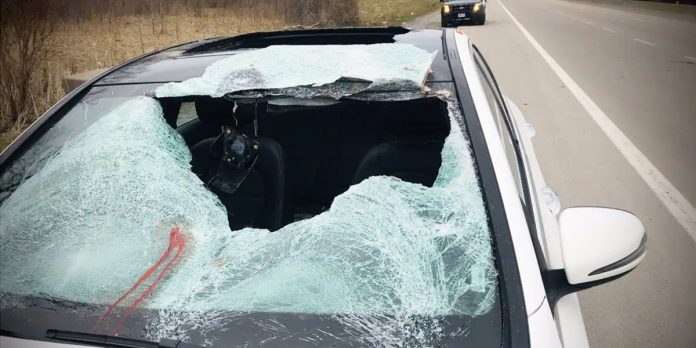
by Dave Werner
Although car-deer crashes occur year-round, November is the peak month for
collisions with deer. In 2020, 43% of vehicles hitting deer or moose happened between October and December, according to the University at Albany’s Institute for Traffic Safety Management and Research. Deer and moose are actively breeding in the fall season, which makes them more visible and more likely to show up on roadways.
“During the fall months, motorists should drive with extra caution to help avoid
collisions with deer and moose,” said Department of Motor Vehicles commissioner Mark Schroeder, adding that drivers should heed deer and moose warning signs and pay special attention in those areas.
In Franklin County there are deer, and every year deer get hit and injured or killed. Meanwhile, numerous vehicles are damaged. Often drivers crash into trees, guide
rails, ditches, or other vehicles in a futile effort to avoid hitting the deer. If you encounter an animal on the roadway, brake firmly but do not swerve. Swerving can cause a collision with another vehicle, a tree, a pole, or other objects.
In 2019 I wrote a similar article titled “What If I Brake Hard for a Deer?” The intent of that article was to warn readers that deer season was a particularly bad time to
tailgate. As deer are apt to suddenly appear drivers may take hard braking action to avoid a collision, and should another vehicle be following too closely, a two-vehicle collision may occur, exacerbating the dangers of hitting deer.
If you do strike an animal, the Department of Environmental Conservation advises motorists to stay away from the animal. A frightened, wounded deer or moose could use its powerful legs and sharp hooves to harm you. Move your vehicle to a safe place. If possible, pull over to the side of the road, and turn on your hazard lights. If you must leave your vehicle, stay off the road and out of the way of any oncoming vehicles. Call the police. Alert authorities if the animal is blocking traffic and creating a threat for other drivers. If the collision results in injury, death (to other persons) or more than $1,000 in property damage, you must fill out an official crash report and send it to DMV.
One last thing – after a collision with a deer, don’t assume your vehicle is safe to
drive. Look for leaking fluid, loose parts, tire damage, broken lights, a hood that won’t latch and other safety hazards. If your vehicle seems unsafe in any way, call for a tow truck.

